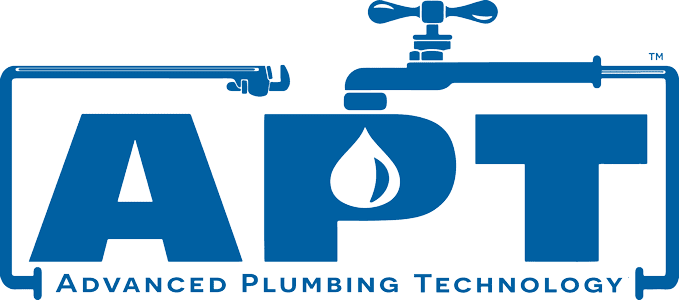Plumbing Troubleshooting: Solving Common Household Water Issues
September 24th, 2023Posted by Brian Shoemaker
Welcome to the ultimate guide to troubleshooting common household water issues, brought to you by Advanced Plumbing Technology. Our mission is to equip you with the knowledge and solutions you need to address those pesky plumbing problems that can disrupt your daily life. From leaky faucets to low water pressure, we’ve got you covered with expert insights and step-by-step instructions. Let’s dive in and tackle these issues head-on!
Identifying and Fixing Leaky Faucets
Leaky faucets not only waste water but can also become an annoying sound in your home. If you’ve ever dealt with the constant drip-drip-drip, you know how crucial it is to address this issue promptly. Here’s how you can do it:
- Gather Your Tools: Before you begin, ensure you have a wrench, replacement washers, and plumber’s tape on hand.
- Turn Off the Water: Locate the shut-off valve under the sink and turn off the water supply.
- Disassemble the Faucet: Carefully remove the handle and access the internal components. Inspect the washer for signs of wear and tear.
- Replace the Washer: If the washer is damaged, replace it with a new one of the same size. Apply plumber’s tape to ensure a secure seal.
- Reassemble the Faucet: Put everything back in place, turn on the water supply, and check for leaks. Voila! No more annoying drips.
Resolving Low Water Pressure
Dealing with weak water flow can be frustrating, especially when you’re trying to take a relaxing shower or fill up a pot for cooking. Here’s how to address low water pressure:
- Check for Clogs: Mineral deposits and debris can accumulate in your faucet aerators or showerheads, causing reduced water flow. Remove these components and soak them in vinegar overnight to dissolve the buildup.
- Inspect Supply Valves: Make sure the supply valves under your sinks are fully open. Sometimes, they can get accidentally turned partially closed, affecting water pressure.
- Examine Pressure Regulator: Your home might have a water pressure regulator near the main water line. Adjusting it can often resolve low pressure issues. Consult a professional if you’re unsure about this step.
- Inspect for Leaks: Undetected leaks can lead to reduced water pressure. Check for any visible leaks in your plumbing system and have them repaired promptly.
Dealing with Slow Draining Sinks
Slow draining sinks are a common annoyance that can indicate a clog building up in your pipes. Here’s how to address this issue effectively:
- Use a Plunger: Place a plunger over the drain and create a tight seal. Plunge vigorously to dislodge the clog. For double sinks, make sure to seal one drain while plunging the other.
- Try a Drain Snake: A drain snake, or auger, is a flexible tool that can reach deep into the pipes to break up and remove clogs. Insert it and rotate the handle to catch onto the clog, then pull it out.
- Natural Remedies: For minor clogs, you can try pouring a mixture of baking soda and vinegar down the drain. Let it fizz for about 15 minutes, then flush with hot water.
- Avoid Chemical Drain Cleaners: While tempting, chemical drain cleaners can damage your pipes and be harmful to the environment. Stick to mechanical methods or natural solutions.
Fixing Running Toilets
A running toilet not only wastes water but can also lead to higher water bills. Here’s how to diagnose and repair this common issue:
- Check the Flapper: Lift the toilet tank lid and inspect the flapper valve. If it’s not sealing properly, water will continue to flow into the bowl. Adjust or replace the flapper if necessary.
- Adjust the Float: The float is what regulates the water level in the tank. If it’s set too high, water will overflow into the overflow tube. Adjust it to the appropriate level.
- Inspect the Fill Valve: A faulty fill valve can also lead to a running toilet. Test it by flushing the toilet and observing the water flow. If it’s not shutting off properly, it might need replacement.
- Replace the Toilet Fill Kit: If your toilet continues to run after attempting the above steps, it might be time to replace the entire fill kit. This is a straightforward DIY task that can save you from wasting water.
Handling Water Heater Issues
Hot water is essential for various household tasks, from showering to doing the dishes. If you’re facing water heater problems, here’s what you can do:
- Check the Pilot Light: If you have a gas water heater and there’s no hot water, check the pilot light. If it’s out, relight it according to the manufacturer’s instructions.
- Flush the Tank: Over time, sediment can build up at the bottom of your water heater tank, affecting its efficiency. Connect a hose to the drain valve, turn off the heater, and flush out the sediment.
- Adjust the Temperature: If your water isn’t hot enough, adjust the thermostat on the water heater. However, be cautious not to set it too high to prevent scalding.
- Inspect for Leaks: Check for any signs of leakage around your water heater. A leaking tank requires immediate attention and possibly a replacement.
Conclusion
There you have it—the Advanced Plumbing Technology comprehensive guide to troubleshooting common household water issues. Remember, while some problems can be addressed with DIY solutions, it’s essential to know your limits. If you’re ever unsure or uncomfortable with a repair, don’t hesitate to reach out to plumbing professionals. By taking swift and informed action, you can maintain a smoothly running plumbing system and enjoy a stress-free home environment.
